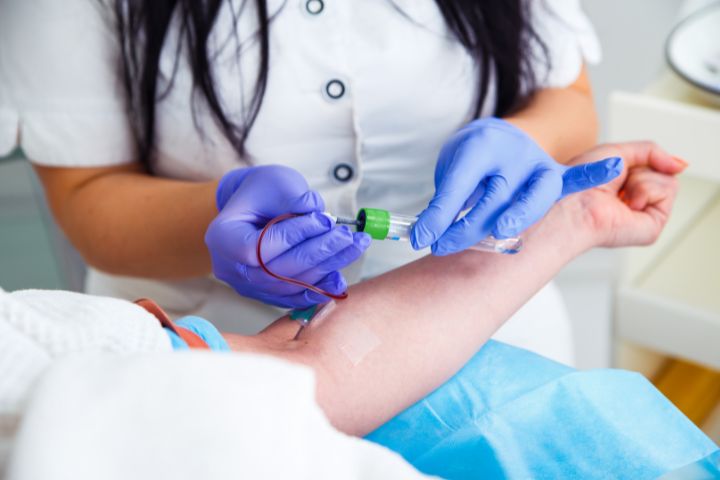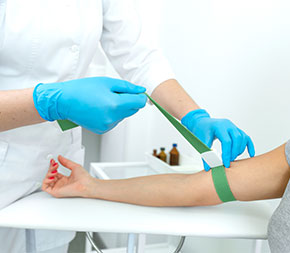The Best Guide To Northeast Medical Institute - New Haven Campus Phlebotomy Course & Cna Class
The Best Guide To Northeast Medical Institute - New Haven Campus Phlebotomy Course & Cna Class
Blog Article
Some Known Questions About Northeast Medical Institute - New Haven Campus Phlebotomy Course & Cna Class.
Table of ContentsThe 25-Second Trick For Northeast Medical Institute - New Haven Campus Phlebotomy Course & Cna ClassTop Guidelines Of Northeast Medical Institute - New Haven Campus Phlebotomy Course & Cna ClassNortheast Medical Institute - New Haven Campus Phlebotomy Course & Cna Class Things To Know Before You Get ThisNortheast Medical Institute - New Haven Campus Phlebotomy Course & Cna Class Things To Know Before You BuyThe Buzz on Northeast Medical Institute - New Haven Campus Phlebotomy Course & Cna ClassEverything about Northeast Medical Institute - New Haven Campus Phlebotomy Course & Cna Class
The usage of such gadgets should be gone along with by other infection avoidance and control practices, and training in their use.For settings with low sources, price is a motoring consider purchase of safety-engineered devices - CNA Training. Where safety-engineered gadgets are not readily available, competent usage of a needle and syringe is appropriate. Unexpected direct exposure and certain details regarding an incident need to be recorded in a register. Assistance solutions must be advertised for those that undergo unintentional exposure.
labelling); transport problems; interpretation of results for medical monitoring. In an outpatient department or center, supply a dedicated phlebotomy workstation containing: a tidy surface area with 2 chairs (one for the phlebotomist and the other for the individual); a hand laundry container with soap, running water and paper towels; alcohol hand rub. In the blood-sampling space for an outpatient division or facility, offer a comfy reclining sofa with an arm rest.
The Ultimate Guide To Northeast Medical Institute - New Haven Campus Phlebotomy Course & Cna Class
Guarantee that the signs for blood sampling are clearly defined, either in a written procedure or in recorded directions (e.g. in a lab type). Collect all the tools needed for the procedure and location it within safe and very easy reach on a tray or cart, making certain that all the products are plainly visible.
Where the patient is grown-up and aware, comply with the actions laid out below. Introduce on your own to the individual, and ask the patient to specify their complete name. Examine that the research laboratory form matches the patient's identity (i.e. match the client's information with the research laboratory type, to make sure exact recognition). Ask whether the license has allergies, phobias or has ever collapsed throughout previous injections or blood attracts.
Make the person comfortable in a supine setting (if feasible). The client has a right to reject an examination at any type of time before the blood tasting, so it is important to guarantee that the client has actually comprehended the treatment - CNA Courses.
Fascination About Northeast Medical Institute - New Haven Campus Phlebotomy Course & Cna Class
Prolong the person's arm and check the antecubital fossa or forearm. Situate a vein of a great dimension that is visible, straight and clear. The representation in Area 2.3, reveals common positions of the vessels, however numerous variants are possible. The average cubital capillary exists in between muscles and is normally one of the most very easy to penetrate.
DO NOT put the needle where blood vessels are drawing away, due to the fact that this enhances the chance of a haematoma. Locating the blood vessel will aid in determining the proper size of needle.
Haemolysis, contamination and presence of intravenous liquid and medication can all modify the outcomes (39. Nursing staff and medical professionals might access main venous lines for specimens following procedures. Samplings from central lines carry a danger of contamination or erroneous laboratory test outcomes. It serves, yet not suitable, to draw blood samplings when initial presenting an in-dwelling venous gadget, before attaching the cannula to the intravenous fluids.
Getting My Northeast Medical Institute - New Haven Campus Phlebotomy Course & Cna Class To Work
Failure to enable enough contact time boosts the risk of contamination. DO NOT touch the cleaned site; in specific, DO NOT place a finger over the blood vessel to guide the shaft of the subjected needle.
Ask the patient to develop a hand so the veins are more prominent. Enter the vein swiftly at a 30 level angle or much less, and proceed to present the needle along the vein at the most convenient angle of access - PCT Courses. Once adequate blood has actually been accumulated, launch the tourniquet prior to taking out the needle
Examine This Report on Northeast Medical Institute - New Haven Campus Phlebotomy Course & Cna Class
Withdraw the needle carefully and use gentle stress to the site with a tidy gauze or completely dry cotton-wool ball. Ask the person to hold the gauze or cotton woollen in position, with the arm extended and increased. Ask the client NOT to bend the arm, because doing so creates a haematoma.

The 3-Minute Rule for Northeast Medical Institute - New Haven Campus Phlebotomy Course & Cna Class
Do not press the syringe plunger since additional stress increases the danger of haemolysis. Where feasible, keep televisions in a shelf and move the shelf towards you. Infuse downwards right into the suitable coloured stopper. DO NOT eliminate the stopper due to the fact that it will release the vacuum cleaner. If the example tube does not have a rubber stopper, infuse very slowly into the tube as reducing the pressure and velocity utilized to transfer the specimen lowers the risk of haemolysis.

Report this page